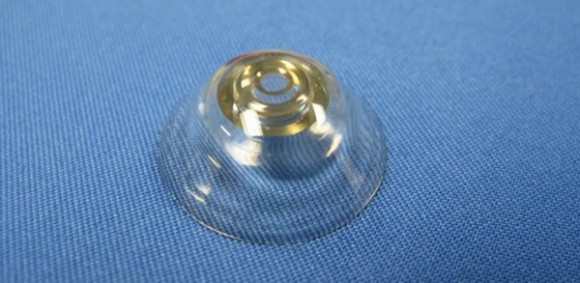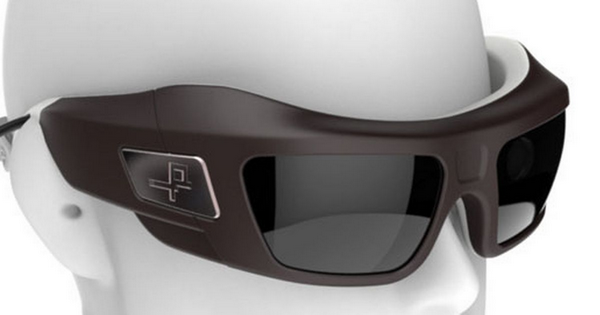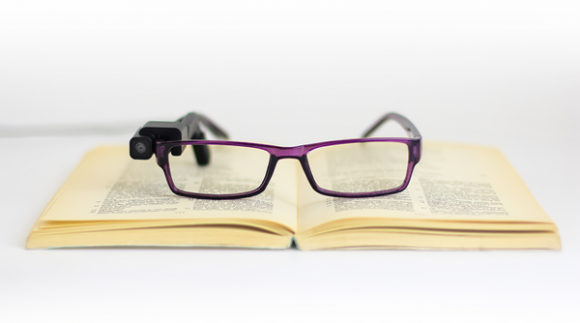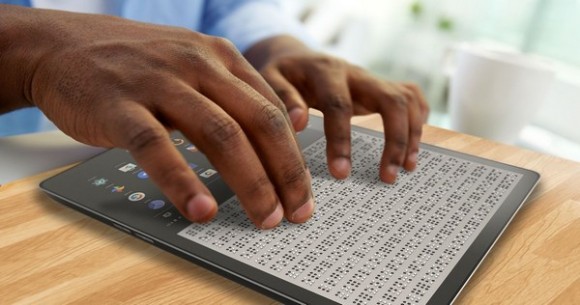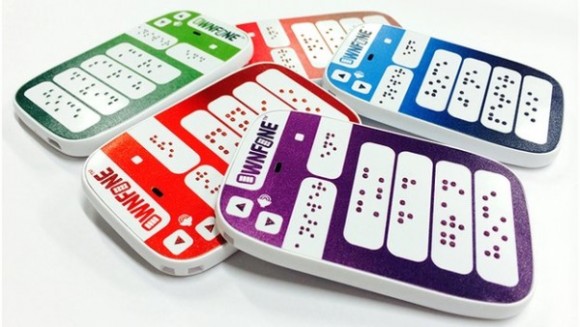Innovation for the visually impaired
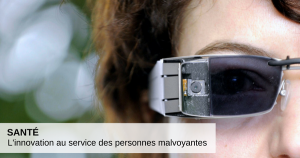
The advances inherent in robotics and artificial intelligence are gradually making concepts that were not so long ago science fiction. While some may sometimes seem futile, many of them are dedicated to supporting and improving the living environment of people with disabilities .
Let's take a look at this article to some concepts dedicated to the visually impaired .
The bionic vision
The word bionic irremediably returns to a futuristic imagination. However, the resulting technologies have been used for many years in the field of prosthetics . The bionic prosthesis can replace organs, limbs failed or absent!
A team of Swiss scientists has designed telescopic contact lenses . These, equipped with a zoom, can be operated by winking! They would significantly improve the vision (up to x2.8) of visually impaired people , especially those with AMD .
The French laboratories Pixium Vision have recently presented their vision system bionic Iris II . Equipped with electrodes, it is an intraocular implant placed in the eye, with glasses provided with a camera . Everything is connected to a computer unit that fits in the pocket. It processes the filmed images and retransmits them to the brain through the optic nerve to reconstruct an image. This system allows people who have lost their sight to regain their independence .
Glasses that have eyes
Low vision is often used as a synonym for blindness . However, a visually impaired person is a person whose visual acuity is less than or equal to 3/10 th. Some visually impaired people wear sharp glasses that are sometimes not enough.
It's for these people that OrCam invented MyEye . This system distributed in France by Essilor adapts to glasses and is equipped with a camera and a headphone . When the visually impaired person needs it, he just has to point out the text to read and MyEye reads it in the hollow of his ear. This concept also allows to recognize the faces and objects previously recorded.
The young company Light Vision has imagined an augmented reality glasses device for patients with AMD and allowing them to regain a "normal" vision. Two technologies are used: the images are projected on the retina and the movement of the pupil is followed by an " eye-tracking ". This handset eliminates the user's eye problems, the focus of the eye and project the information to a specific place in the eye.
Autonomy at all costs
Reading is more than a necessity , it is also a pleasure for many of us. Because it considerably improves autonomy and comfort , it is necessary to worry about supporting people with disabilities.
Blitab Technology has created the world's first braille tablet . The liquid used makes it possible to materialize characters readable by the visually impaired persons . The technology used also promises to highlight images and other initially visual media.
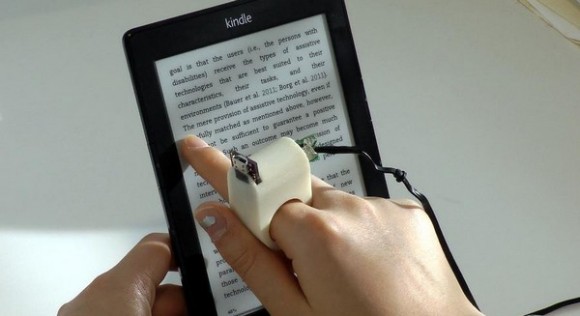
In the same vein, an MIT team created the FingerReader . This is a connected ring that can scan the text as the finger of the visually impaired moves on the page and read it in real time !
The OwnFone concept is geared to the everyday object par excellence: our phone . It is a mobile with a keyboard printed Braille . It allows you to reach pre-recorded contacts and to pick up with ease. Voluntarily simple in its design but also in its use, the concept should be sold only a few tens of euros!
These last years have been rich in progress in the field of visual acuity and optical health and it is a safe bet that novels of anticipation will be quickly caught up by the innovation . It does not seem illusory to think that this one will be able to return the sight of some time! The next industrial challenge will be to put these innovative technologies at the service of prevention and work upstream of low vision .


